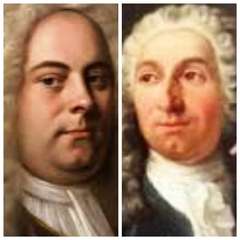|
Back
If It’s Baroque, Don’t Fix It New York
David Geffen Hall, Lincoln Center
11/21/2018 - & November 23, 24, 2018
Georg Frederic Handel: Concerto Grosso, Op. 6, No. 1 – Water Music Suites No. 1 and No. 3
Jean-Philippe Rameau: Selections from Dardanus
Sebastien Marq (Recorder), Sheryl Staples, Qianquian Li (Violins), Carter Brey (Cello)
New York Philharmonic Orchestra, Emmanuelle Haïm (Conductor/Harpsichord)

E. Haïm (©Askonasholt.co.uk)
“What the devil do you mean to sing to me, Priest? You are out of tune.”
Jean-Philippe Rameau, on his deathbed.
“You have taken too much trouble over your opera. Here in England that is a mere waste of time. What the English like is something they can beat time to, something that hits them straight on the drum of the ear.”
George Frederic Handel to the young Gluck
From the moment Emmanuelle Haïm danced onto the stage for her New York Philharmonic debut, it was obvious that the Pilgrims–who we supposedly celebrate this week–have a lot to answer for. A few decades after their 1620 landing in (the soon-to-be) Massachusetts Bay Colony, they could have been dancing to the Tambourins of Jean-Philippe Rameau, or celebrating a water-cruise with Handel’s glorious Water Music. Instead, when not putting idolaters in stocks or hunting witches, they were boring themselves with the official Psalters.
The Pilgrims weren’t totally against instruments, but they did ban musical instruments for religious affairs.
Flutes and drums and viols, they felt, were the ways those dreaded Papists worshiped. Good Puritans would never stoop to the music of the Anti-Christ.
Fortunately, Jean-Philip Rameau never let his Catholicism bother him. And while he is rarely played here, outside of harpsichord recitals, Ms. Haïm let the unlikely New York Philharmonic swing with the outrageously orchestrated music from an apparently outrageous opera called Dardanus.
“Unlikely”, perhaps. But when given the chance, the truncated 18th Century orchestral forces showed a spirit far spicier than mere Baroque music.
A friend described Rameau as “courtly”, but all French music partook of the Versailles court. Instead, the very proper Jean-Philippe Rameau–who partook of the Gallic obsession of writing encyclopedic rationales of their arts–was pretty damned eccentric.
Under Ms. Haïm’s rhythmic bobbing and dancing (and part-time harpsichord playing), we had an “Entrance of the Warriors”, the New York Philharmonic percussion section letting loose with drums–and a metal chain which ascended and descended with a sound that would have done credit to Rameau’s descendent, Monsieur Berlioz.

G. F. Handel/J.-P. Rameau
Or the conductor gave us the whole flute section performing a delicious “sleep” music that could have been written by Gluck.
You want exotic music? Rameau had already created music for American Indians and the Far East. Here, in the March of Different Nations, he created a kind of Ottoman/Persian dance. And for the sound of war, he eschewed the Richard Strauss cacophony for a more civilized French war of quiet foreboding basses and cellos. It wasn’t especially military. But...well, in the Haïm-Rameau hands, C’était la guerre.
For the American premiere of this half-hour suite, I, for one, was entranced by the colors, the rhythms, and especially Emmanuelle Haïm’s baton-less conducting. (Perhaps she remembered the tragedy of Lully, who plunged a conducting-stick in his foot and died of gangrene.) Whatever criticism the original opera had for its absurd libretto, Ms. Haïm, France’s most notable Baroque performers and conductors, gave the music life and delight.
The first half was musically not inferior. But we all know Handel’s Water Music. Or perhaps not. In fact, no original score of the music exists. All we know is that about 50 versatile musicians had crowded onto King George I’s boat (apparently modeled on Shakespeare’s Cleopatra barge), serenading him with tunes, dances and martial air until three in the morning.
Ms. Haïm arranged the Water Music in its two suites for strings, horns (fabulous horn playing) and one of the most lovely Baroque movements ever.
This was the Sarabande played by alto recorder by Sebastien Marq, a frequent visitor with Les Arts Florissants. As a one-time performer on this instrument, I have rarely heard such a lovely sound: not the sound of a wooden flute but with a steadiness of tone which is so difficult to master.
Ms. Haïm started the evening with one of Handel’s Concerti Grossi, and while it started solemnly enough, she never allowed her own movements to take it with German stolidness. Handel might have been less picturesque than Rameau, but his dances here, especially a final gigue, offered the Saxon equivalent of breathlessness.
Ms. Haïm never allowed her music to become feverish. She is far too learnéd for any nonsense. But she also knows that Baroque music was far more than courtly charm. And if she erred at all, it was on the side of pure exhilaration.
Harry Rolnick
|